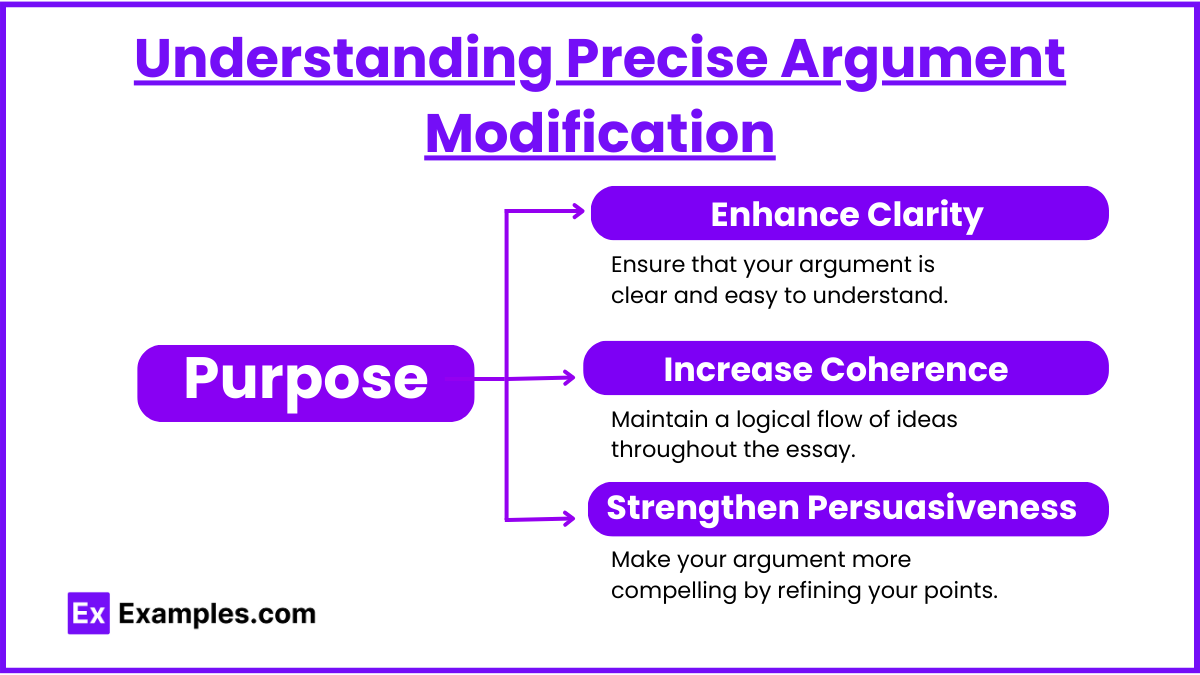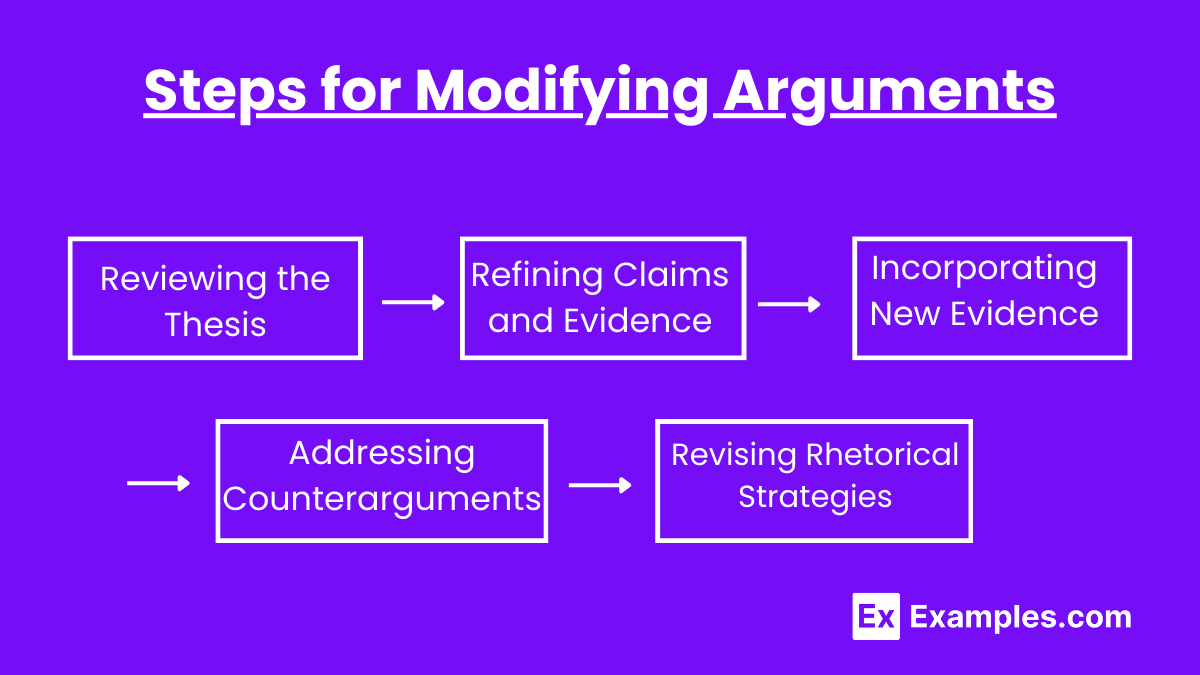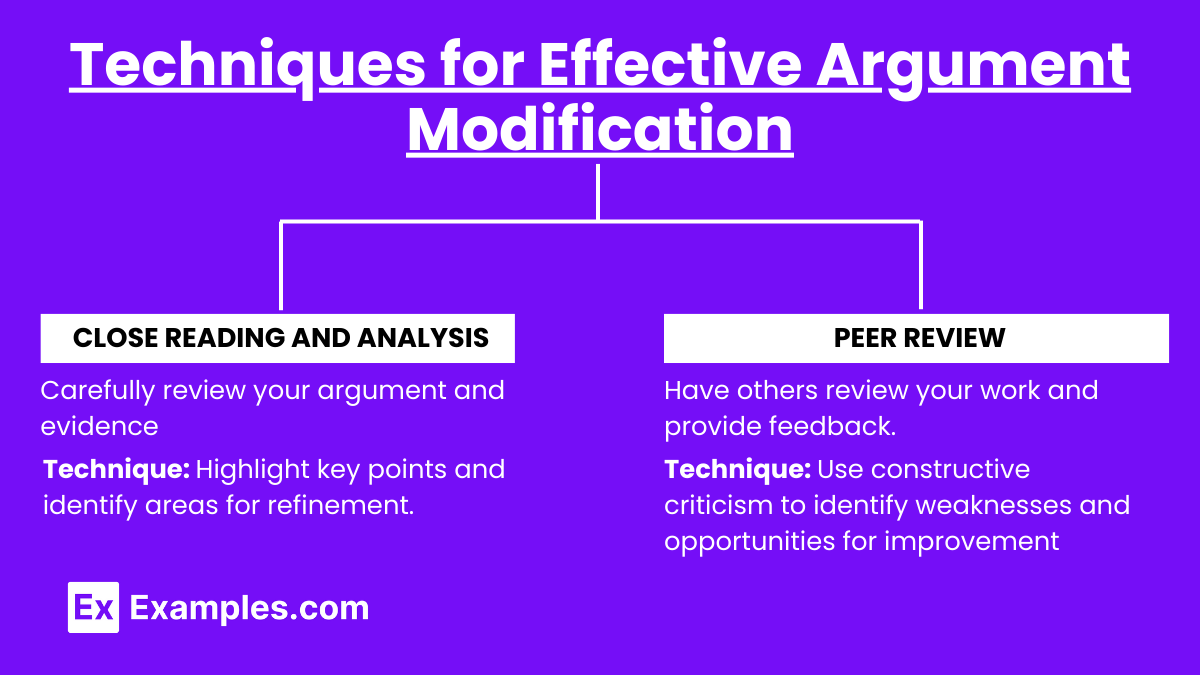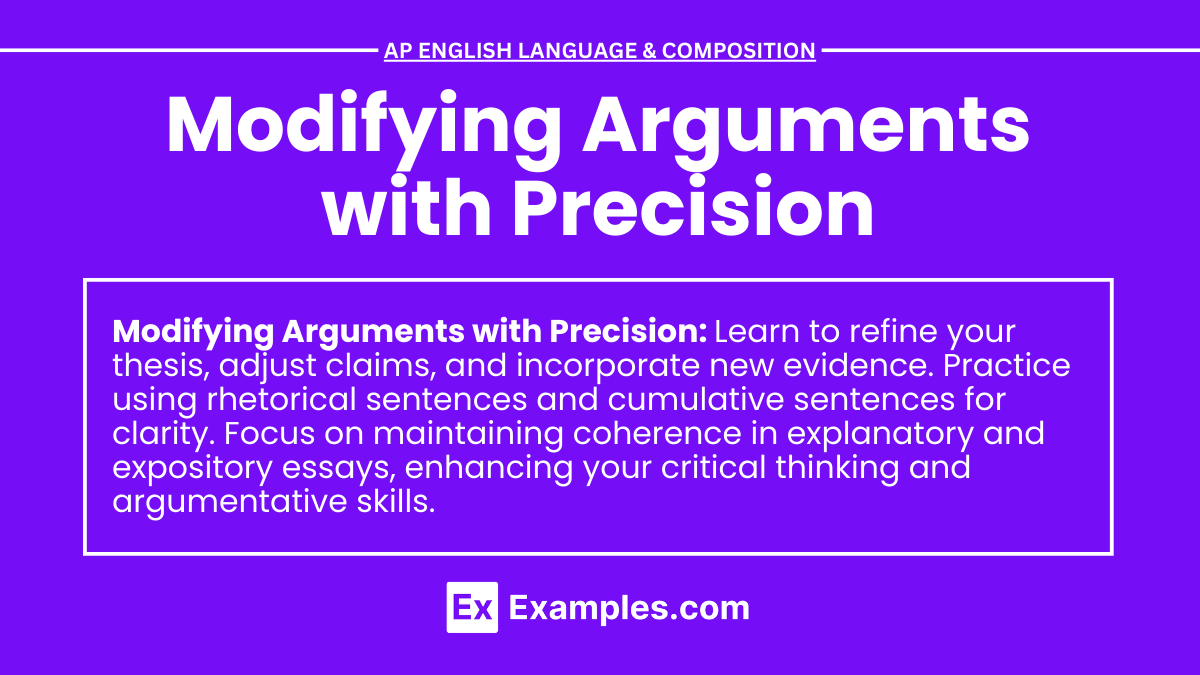In the AP English Language and Composition exam, the ability to modify arguments with precision is essential for developing nuanced and persuasive essays. This skill involves refining your thesis, adjusting your reasoning, and seamlessly incorporating new evidence, ensuring your arguments remain coherent and compelling. Whether engaged in argumentative writing or delivering an argumentative speech, using rhetorical sentences and cumulative sentences allows you to present refined, well-supported arguments. Mastering this technique enhances the clarity, coherence, and persuasiveness of your writing, making your arguments more effective and impactful.
Learning Objectives
By studying the topic of modifying arguments with precision, students will achieve several key learning objectives. They will enhance their critical thinking skills by refining their reasoning and integrating new evidence effectively. Students will learn to use cumulative sentences and rhetorical sentences to present nuanced arguments in explanatory essays and expository essays. They will develop the ability to craft a strong final thesis statement that accurately reflects their refined arguments. Mastery of these techniques will enable students to produce clear, coherent, and persuasive essays.
Understanding Precise Argument Modification

Definition
Modifying arguments with precision means making deliberate and exact adjustments to your claims, evidence, and reasoning to enhance clarity, coherence, and persuasiveness.
Purpose
- Enhance Clarity: Ensure that your argument is clear and easy to understand.
- Increase Coherence: Maintain a logical flow of ideas throughout the essay.
- Strengthen Persuasiveness: Make your argument more compelling by refining your points.
Steps for Modifying Arguments

1. Reviewing the Thesis
- Definition: Reassess your thesis statement to ensure it accurately reflects the refined argument.
- Techniques:
- Clarify: Make your thesis more specific.
- Refocus: Adjust the thesis to better align with the evidence and analysis.
- Example: Original Thesis: “Social media impacts mental health.”
- Modified Thesis: “Excessive social media use significantly contributes to increased anxiety and depression among teenagers.”
2. Refining Claims and Evidence
- Definition: Reevaluate your claims and ensure they are supported by strong evidence.
- Techniques:
- Strengthen Claims: Make sure each claim directly supports your thesis.
- Enhance Evidence: Use more precise or additional evidence to bolster your claims.
- Example: Original Claim: “Social media can be harmful.”
- Modified Claim: “Studies show that excessive social media use leads to higher levels of anxiety and depression.”
3. Incorporating New Evidence
- Definition: Seamlessly integrate new evidence into your argument.
- Techniques:
- Contextualize: Provide context for the new evidence.
- Analyze: Explain how the new evidence supports or refines your argument.
- Example: Introduce new study results, explain their relevance, and connect them to your thesis.
4. Addressing Counterarguments
- Definition: Recognize and refute opposing viewpoints to strengthen your argument.
- Techniques:
- Acknowledge: Present the counterargument fairly.
- Refute: Provide evidence and reasoning to counter the opposing view.
- Example: “While some argue that social media fosters connection, studies indicate that it often exacerbates feelings of loneliness.”
5. Revising Rhetorical Strategies
- Definition: Adjust the use of rhetorical devices to enhance persuasiveness.
- Techniques:
- Use Ethos, Pathos, Logos: Balance appeals to credibility, emotion, and logic.
- Adjust Tone: Ensure the tone remains appropriate for the audience and purpose.
- Example: Employ a more formal tone when addressing serious evidence and a conversational tone when presenting relatable examples.
Techniques for Effective Argument Modification

Close Reading and Analysis
- Definition: Carefully review your argument and evidence.
- Technique: Highlight key points and identify areas for refinement.
Peer Review
- Definition: Have others review your work and provide feedback.
- Technique: Use constructive criticism to identify weaknesses and opportunities for improvement


